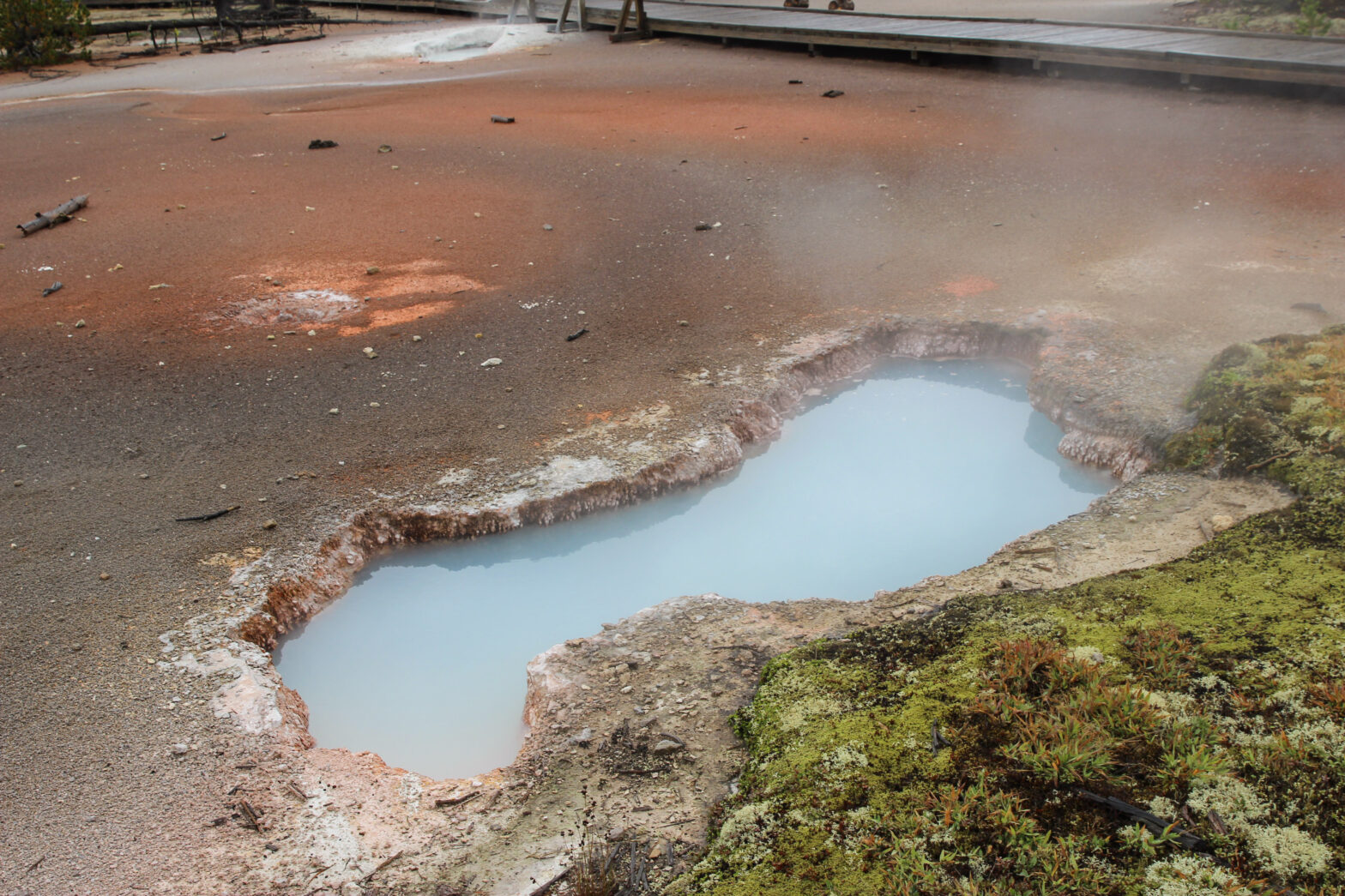Among the many poetic names for the thermal features at Yellowstone is the humble paint pot. A paint pot is basically a mud pot that takes on a characteristic color due to the oxidation state of the mud around it. Paint pots range from red to yellow to bright blue, and we’d seen several already at both Norris and Mammoth in previous days. However, this second-or-third-tier attraction area of Yellowstone promised to provide a high density of them, because, well, it’s in the name. Somehow on this Wednesday, time was rumbling by – we’d already seen the Midway Basin, West Yellowstone, and Gibbon Falls, but it still felt like the day should be young. Instead, it was already past 3:00 in the afternoon. This fortunately should not prove to be a long stop – the entire Artist Paintpot Trail is about a mile in length.
There was parking for Elizabeth’s Subaru when her, Pam, and myself got there. We took a little boardwalk that led out to a trail through the densely wooded area behind the parking lot. This trail was flat and soaked from the day’s rain, but fortunately was made of crushed stone so there wasn’t mud to contend with. The trail led to a similarly heavily wooded hillside straight ahead – the aptly named Paintpot Hill. It was here that the trail actually led into the thermal areas right at the base of the hill. We decided to do the loop clockwise around. This would put us past the only two named features I could find in researching this post. First, there was the aptly named Blood Geyser, so-called because of the brilliant red dirt surrounding it. My guess is this would pop a lot better without the persistent mist, but I did the best I could in editing.
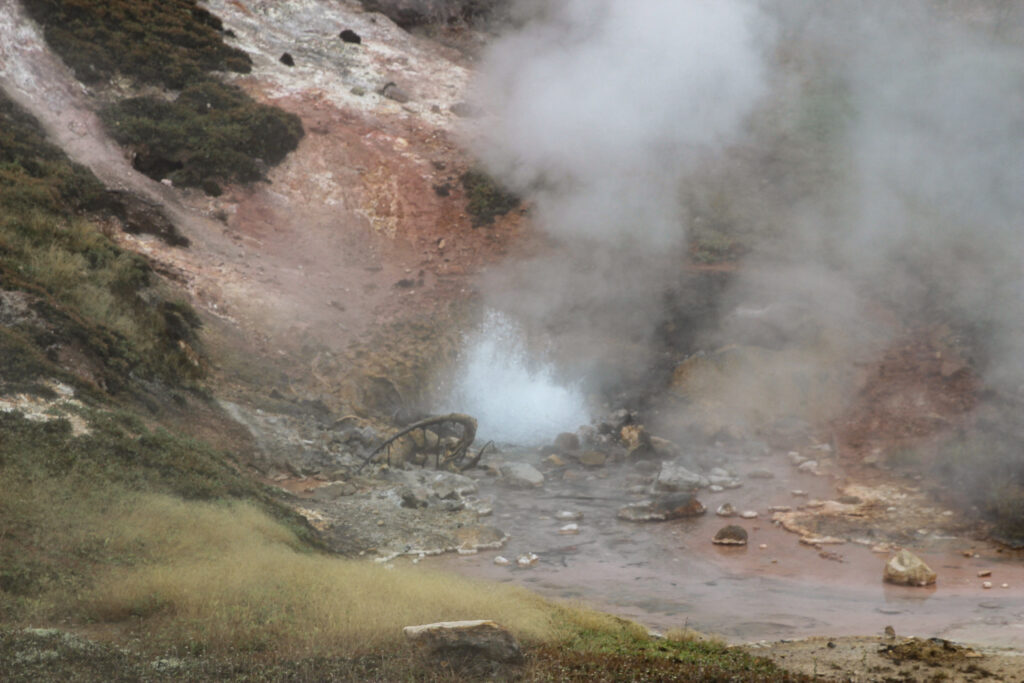
And then there was Flash Spring, a small bubbling spring next to it.

As far as the two named features go, I’d give one a B+ and the other a C. Fortunately, many of the unnamed features of the Paint Pot group made up the slack. It started when we rounded the northern corner of the boardwalk loop and started to climb Paintpot Hill. The ground under which we walked was a crazy vibrant red:
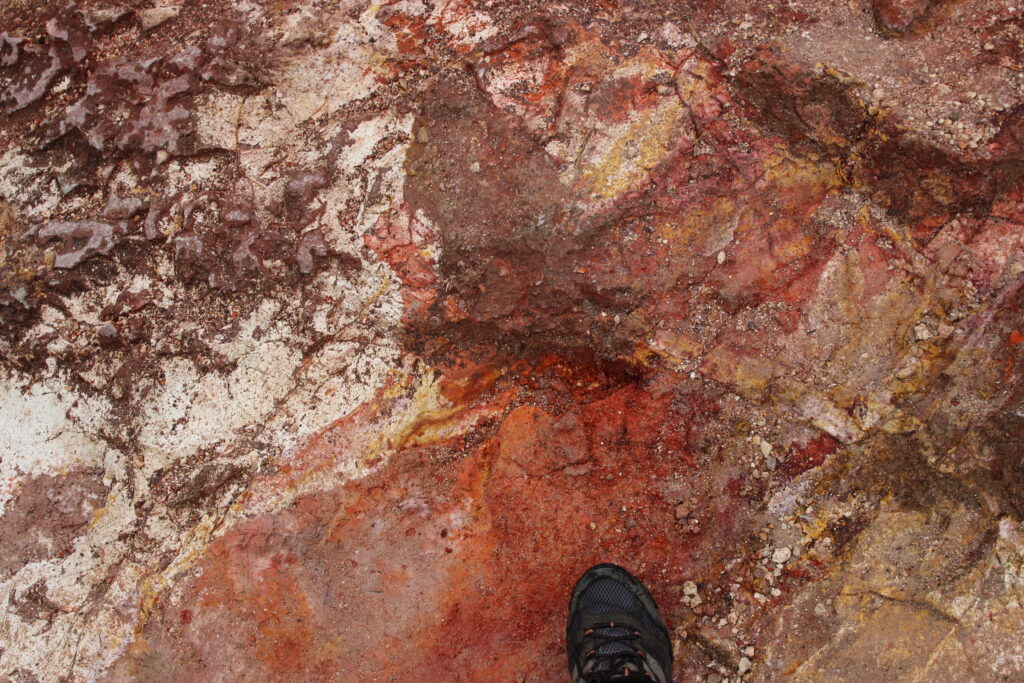
The hill was steep, but the three of us only had to walk a fraction of the hill before it began to level off. From the top, there was a rather panoramic view of the surrounding geyser basin that the loop enclosed, as well as the rugged caldera beyond.
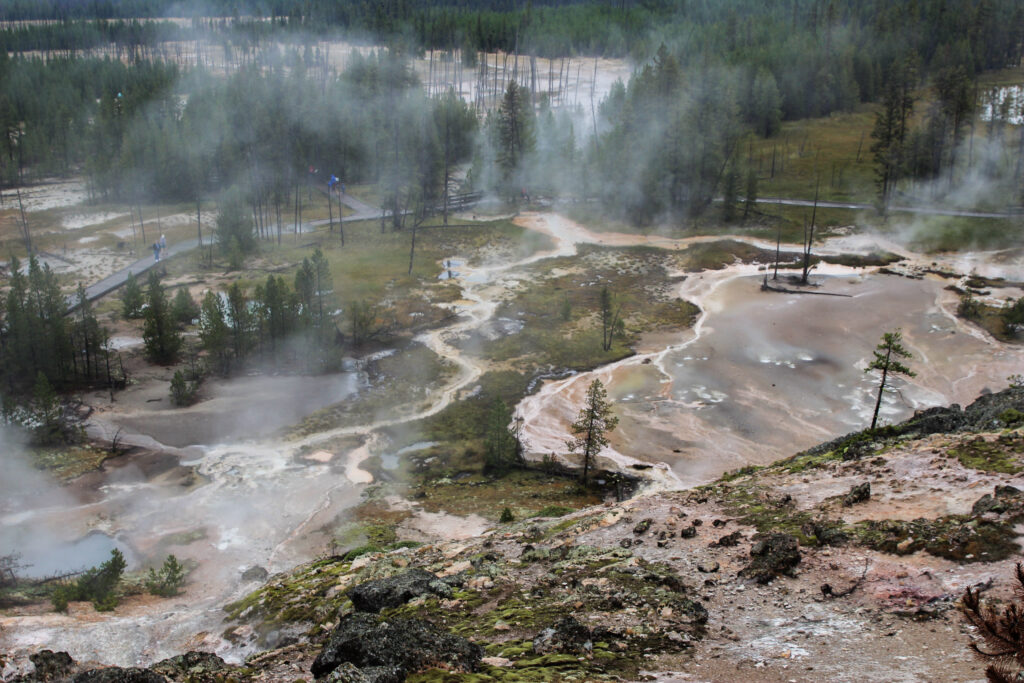
And back behind this hillside lay a few small paint pots and one of the biggest mudpots I’d seen the whole trip.
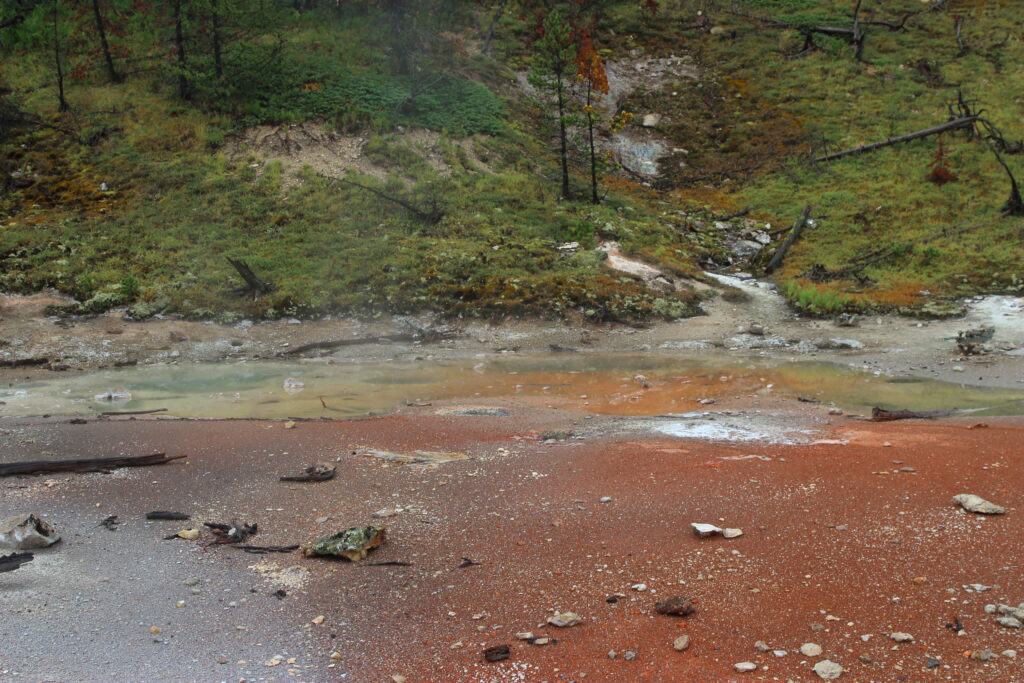
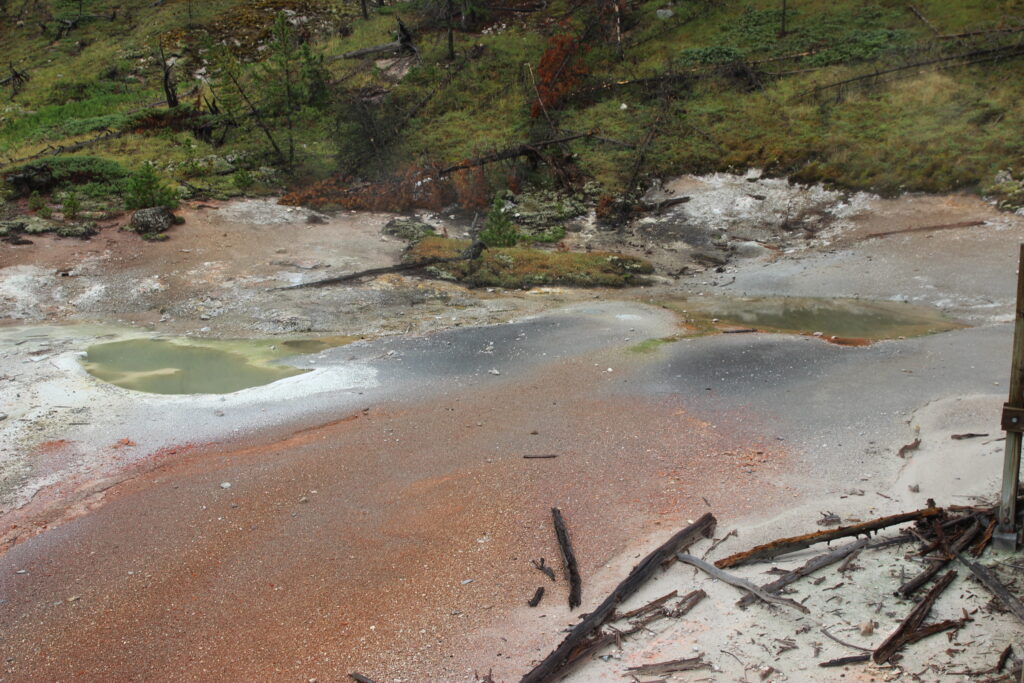
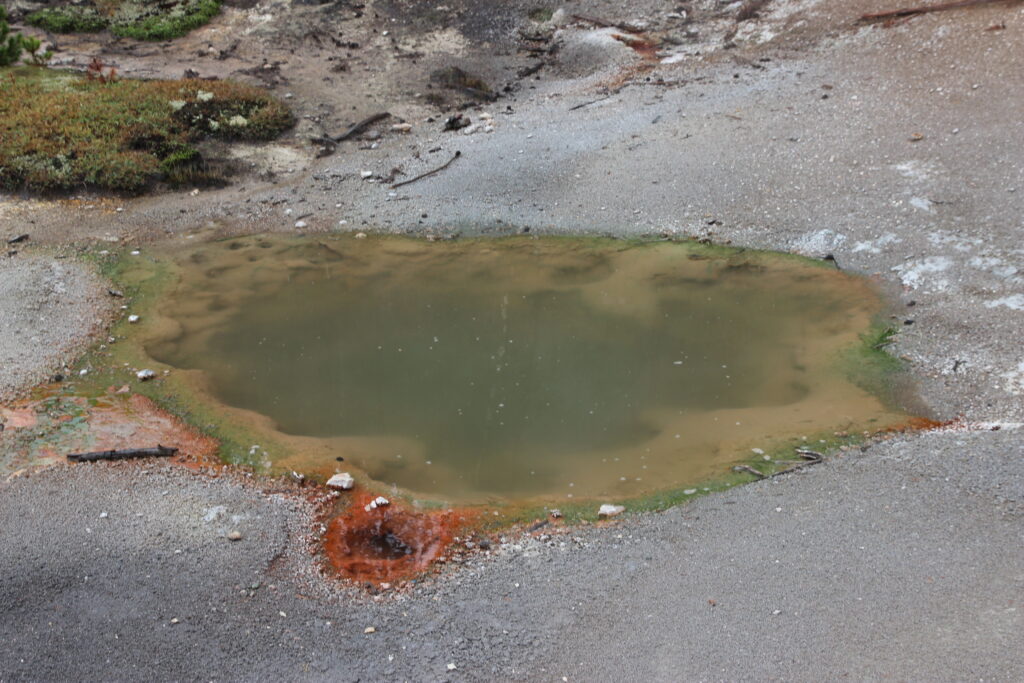
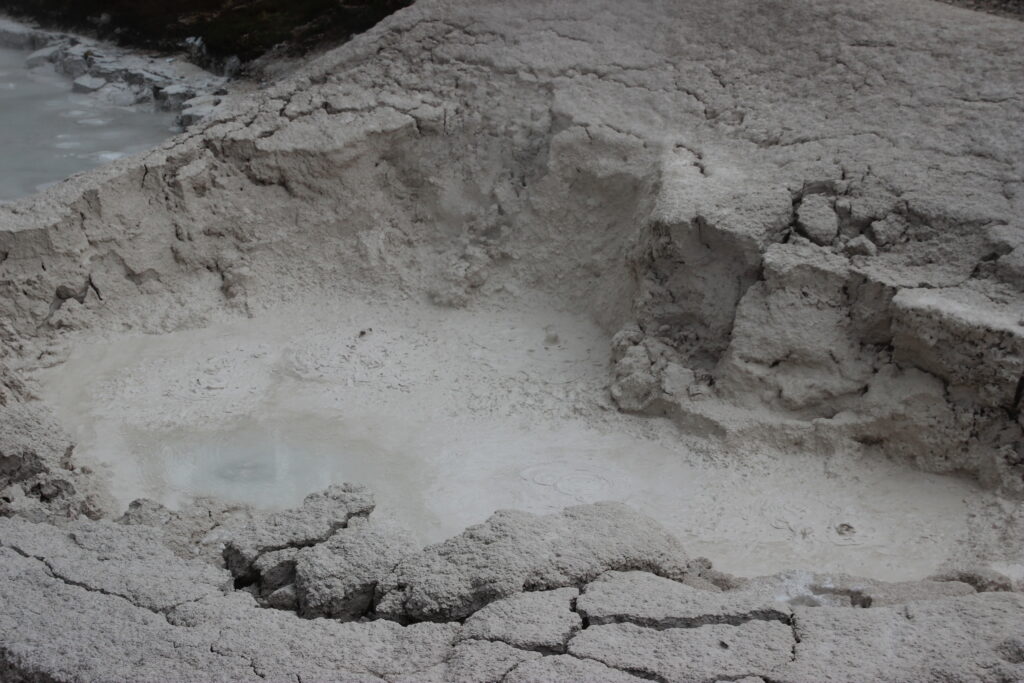
And then – while photographing that belching mudpot – one of the biggest disasters of the entire trip struck. My camera died. The camera that had taken hundreds of shots over the last week, with the trusty 24-70 mm rental lens, was out of commission – kind of. If I turned it back on, I could usually squeeze off one picture before it died again. For the next day and a half, I carefully rationed all of my camera photography to get one shot of whatever we were looking at. Otherwise, it was time for the trusty iPhone to shine.
After cresting the hill, we descended the opposite slope on the path. I was a little worried about Pam here – it was pretty wet and slick, and I didn’t want her falling. I needn’t have worried. Pam managed the trail as gamely as she managed anything else in this punishing week of tourism. That worry serves as a reminder that while in hindsight I focus on what we saw and what I photographed, at the time I was more interested in sharing those experiences with those around me. Naming the individual features at each basin is just a fussy Nolan invention of later on.
With that said, the most memorable feature of the Artist Paint Pots may not have been Blood Geyser, or the big, slowly churning mud pot at the top of the hill. At the bottom of the hill, near the beginning of the loop, there were two paint pots that sat in that brilliant red dirt. Maybe it was a knee-jerk reaction, but to that point Elizabeth and I had commented that the Artist Paint Pots were lacking in paint pots than an artist would want to use. Outside of the snot-green ones at the top of the hill, have you seen anything you would want to paint with? I recognize that this is definitely a case of “third day in Yellowstone” syndrome. The Artist Paint Pots would be an otherworldly attraction anywhere else on the planet except for Yellowstone. But the lack of true vibrant paint pots would prompt Elizabeth to call this place her biggest disappointment afterward. Except for these. They were sky-blue, which set off incredibly against the red sand. There was a milky element to them too, which prompted me to comment that I’d like to paint clouds with them. These were the brilliant colors I expected.
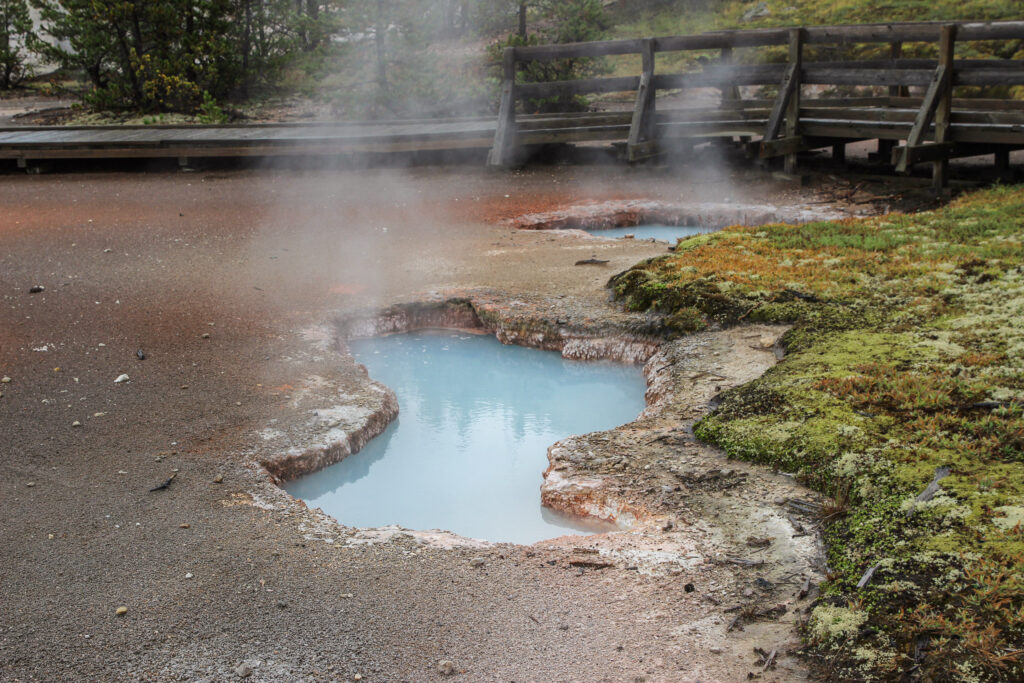
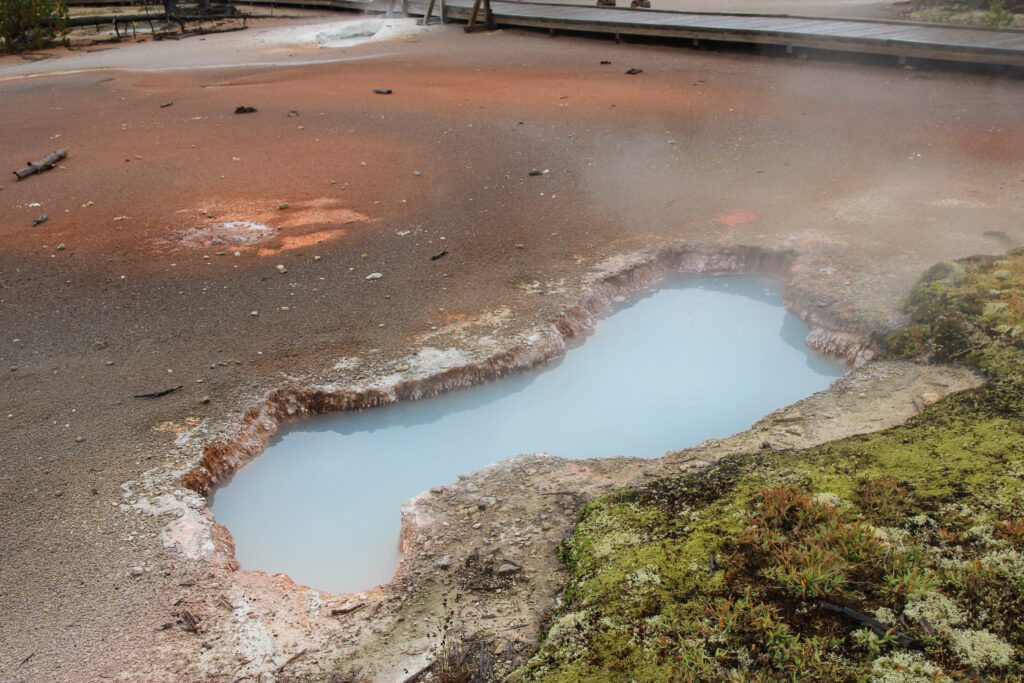
If only the Artist Paint Pots had like 4 more features like that, it could have been one of the underrated features of the park.
We made our cold, rainy way back toward the car. As I’d expected, it wasn’t a long stop. At the time, I didn’t consider it a favorite either, but the Artist Paint Pots have grown on me over time.
